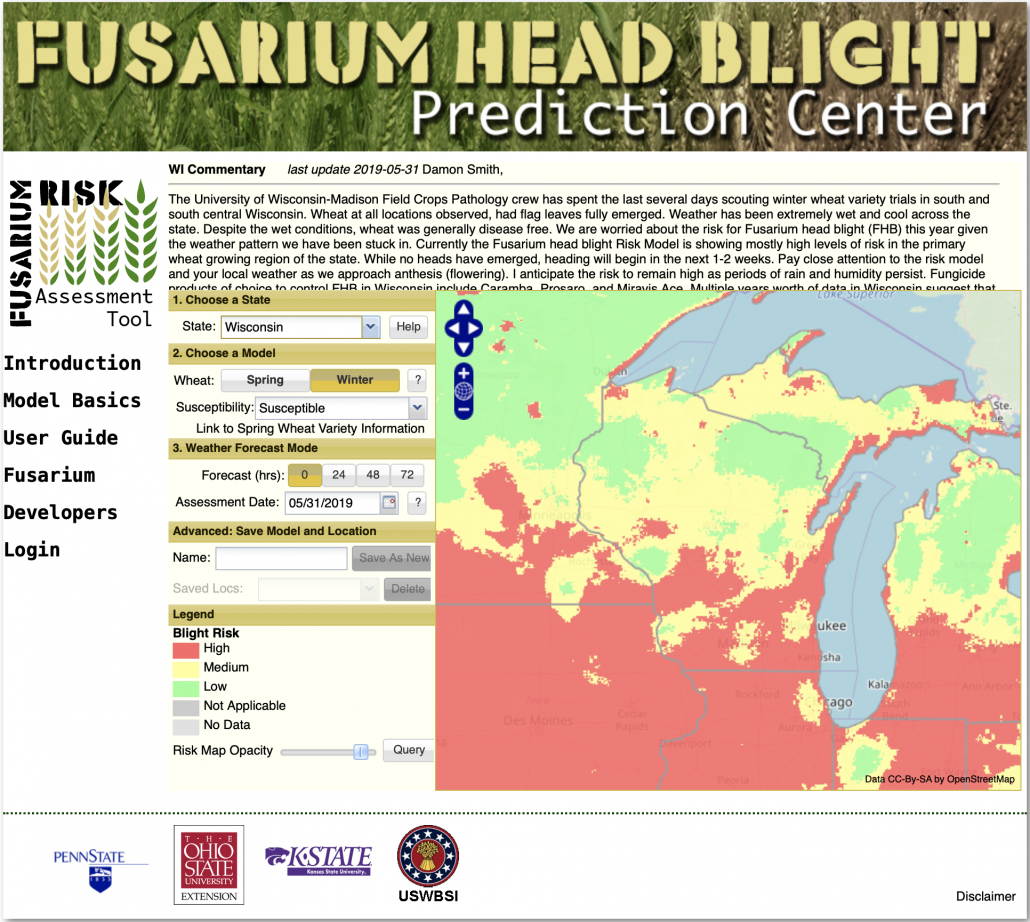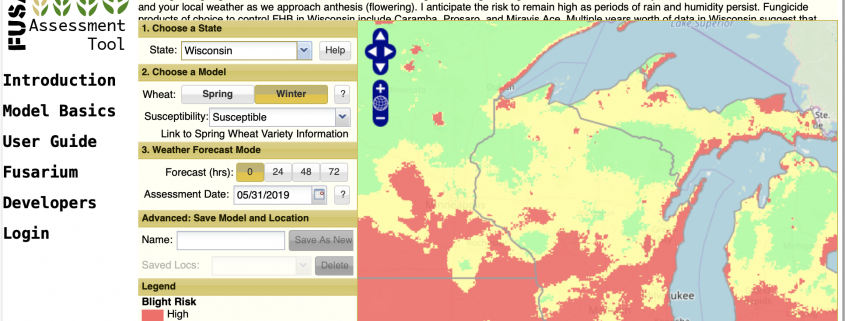Wisconsin Winter Wheat Disease Update – May 31, 2019
Damon Smith, Extension Field Crops Pathologist, Department of Plant Pathology, University of Wisconsin-Madison
Brian Mueller, Assistant Field Researcher, Department of Plant Pathology, University of Wisconsin-Madison
The University of Wisconsin-Madison Field Crops Pathology crew has spent the last several days scouting winter wheat variety trials and commercial wheat fields in south and south-central Wisconsin. Wheat at all locations observed had flag leaves fully emerged. Weather has been extremely wet and cool across the state. Despite the wet conditions, wheat was generally disease free in all locations visited.
In Sharon, WI wheat looked decent despite challenging winter and spring conditions. The stand was a bit uneven in terms of growth stage, but most varieties looked good. It won’t be a record yield year, but stands look better than anticipated at this location. Wheat at the Arlington location in central Wisconsin looked very good with strong stands combined with even growth stages across varieties. I anticipate yields to be decent. At the Fond du Lac location wheat was in okay shape, however several varieties did experience significant winterkill. Stands were like those in Sharon, with uneven growth stages within varieties.

Figure 1. Fusarium head blight prediction for May 31, 2019
While disease on wheat has been relatively non-existent in Wisconsin, weather has been extremely wet across the state. Considering these conditions, we are worried about the risk for Fusarium head blight (FHB) this year given the weather pattern we have been stuck in. Currently, the Fusarium head blight Risk Model (http://www.wheatscab.psu.edu) is showing mostly high levels of risk in the primary wheat growing region of the state (Figure 1). While no heads have emerged, heading will begin in the next 1-2 weeks. Pay close attention to the risk model and your local weather as we approach anthesis (flowering). I anticipate the risk to remain high as periods of rain and humidity persist. Fungicide products of choice to control FHB in Wisconsin include Caramba, Prosaro, and Miravis Ace. Multiple years of data in Wisconsin suggest that the best application window for any of these products begins at the start of anthesis until 5-7 days after the start of anthesis. Applying fungicide before anthesis or more than 7-10 days after anthesis will result in poor performance against vomitoxin accumulation. For information pertaining to recent fungicide studies on winter wheat in Wisconsin, CLICK HERE and scroll to page 12. Other reports can be found by CLICKING HERE. Flag leaves are out, get out and scout!





